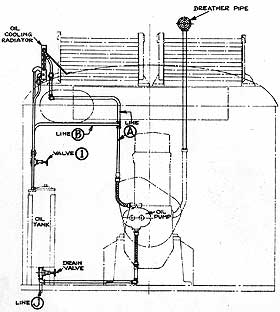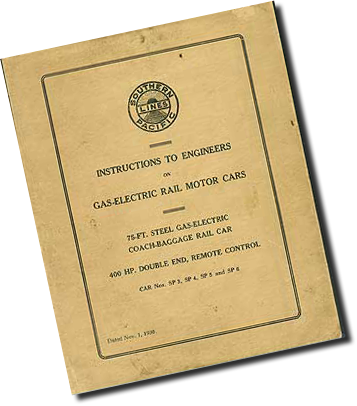.mmmmmmmmmmmmmmmmmmmmmmmmmSP Motor 03... in 1946?........mmmm.
mmmmlast page revision: 5-21-19
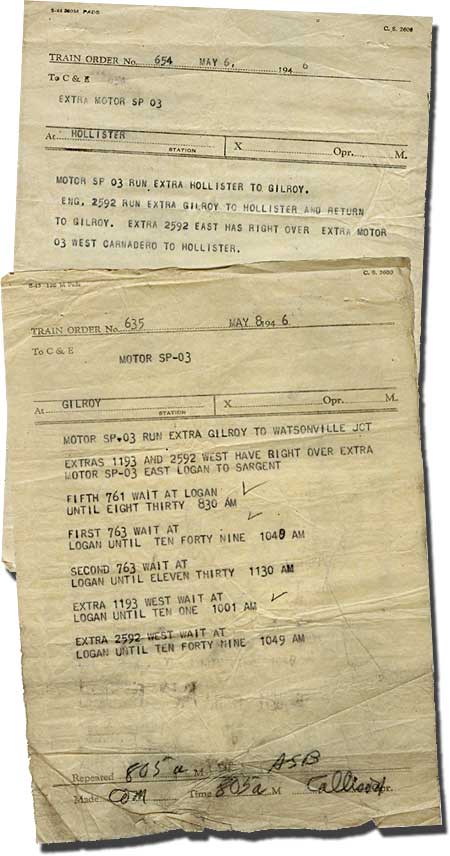
Wx4 has yet to run across complete data regarding to the disposition of SP's fleet of gas-electric motor cars. John Bonds Garmany wrote a thorough history of their early careers in his Southern Pacific Dieselization (1985), but data are missing regarding the ultimate fate of cars not scrapped at the end of their SP revenue careers. Some further (and some great pictures) info can be found in a 1999 article by Phillips C. Kaufke in SP Trainlines (see bibliography).
What we can deduce using these sources is that SP had disposed of all of its Pacific Lines gas-electrics by the end of 1945 save three that were transferred to maintenance of way service. The SP-1 is recorded as having its motors removed at the time of its conversion to MW-7017H (it was stiil in service as MW-4257 in 1959). It is unclear whether or not the others kept their engines.
- SP-1 (Mack-Cummings, 1929) became SPMW 7017H on 9-2-43, later SPMW 4257 (motors removed)
- SP-2 (J.G. Brill, 1930) became SPMW 7028A on 1-26-43 (see page bottom)
- SP-9 (J.G. Brill, 1930) became SPMW 7017J on 9-30-45 (Garmany lists the unit as vacated in 1942)
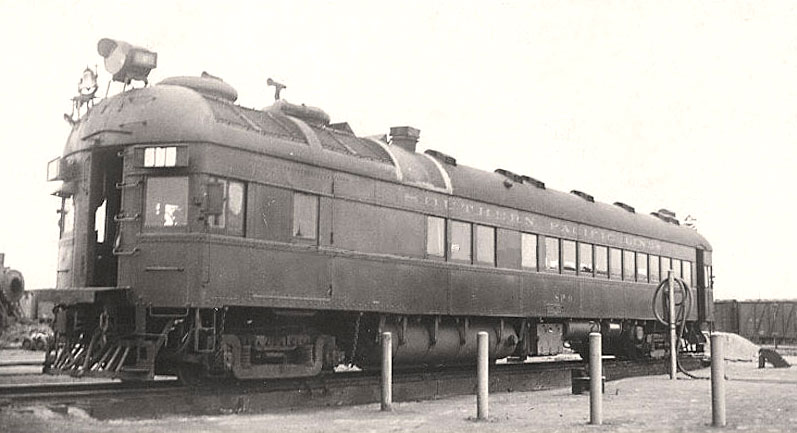
above: SP Brill Motor #9, seen here at Bayshore Roundhouse on 9-21-35, later became SPMW 7017-J. Ted Wurm, Wx4 Collection.
below: SP EMC/Pullman Motor #6 was similar to Motor #2, the later SPMW # 7028-A. Motor #6 went to Milwaukee Road in 1941.
Porterville, CA 6-18-36; photographer unknown, Wx4 Collection
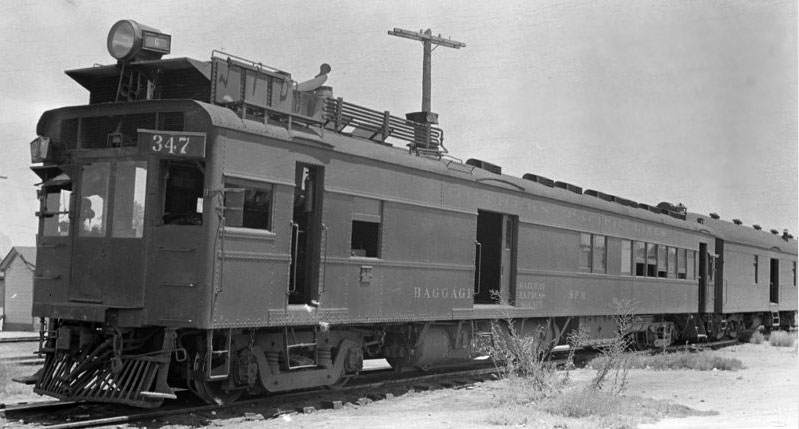
Further reading about SP's gas-electrics:
- Southern Pacific Dieselization, by John Bonds Garmeny; PFM Publications, 1985; 400 pages plus appendicies. The early part of this book, thorough fascinating chapters about SP's motor cars and early diesel experiments, is worth the price of admission (if the travails of railroad dieselization interest you, lay your hands on Hirsimaki's multi-volumed Black Gold - Black Diamonds, The Pennsylvania Railroad and Dieselization; a Wx4 Staff favorite). Our only criticisms of Garmeny's book are that it lacks disposition data for SP's diesel-electric roster, along with the aforementioned incomplete gas-electric data.
- Diagrams Common Standard Rail Motor Cars Southern Pacific Lines as of 1937; reprint by Southern Pacific Historical & Technical Society, 1996. This large reproduction contains diagrams for then-existing SP, NWP and TNO gas-electrics. The previously-retired GE gas electrics, and the few remaining McKeen gas-mechanicals are not covered.
- SP Company Pacific Lines Gas-Electric Rail Cars, by Phillips C. Kaufke; article in SP Trainline, Issue 60, Summer 1999 that is still (1-2004) available from SPH&T Society. This wonderful must-have only includes a roster for the latter-day (1929-30 built, SP-1 through SP-12) motors built for the Pacific Lines, not later transferees from NWP, but makes up for this with excellent narrative and extensive material on actual assignments.
- Instructions to Engineers on Gas-Electric Rail Motor Cars, Southern Pacific, 11-1-30; 58 pages plus diagrams. This early operators' manual covers EMC-Pullman Cars SP-3 to SP-6. Mainly text, this booklet also contains a few photos of the power plant, plus extensive diagrams of various systems (example: right), but no exterior drawings or photos. Click on the image for a PDF of the full manual.
